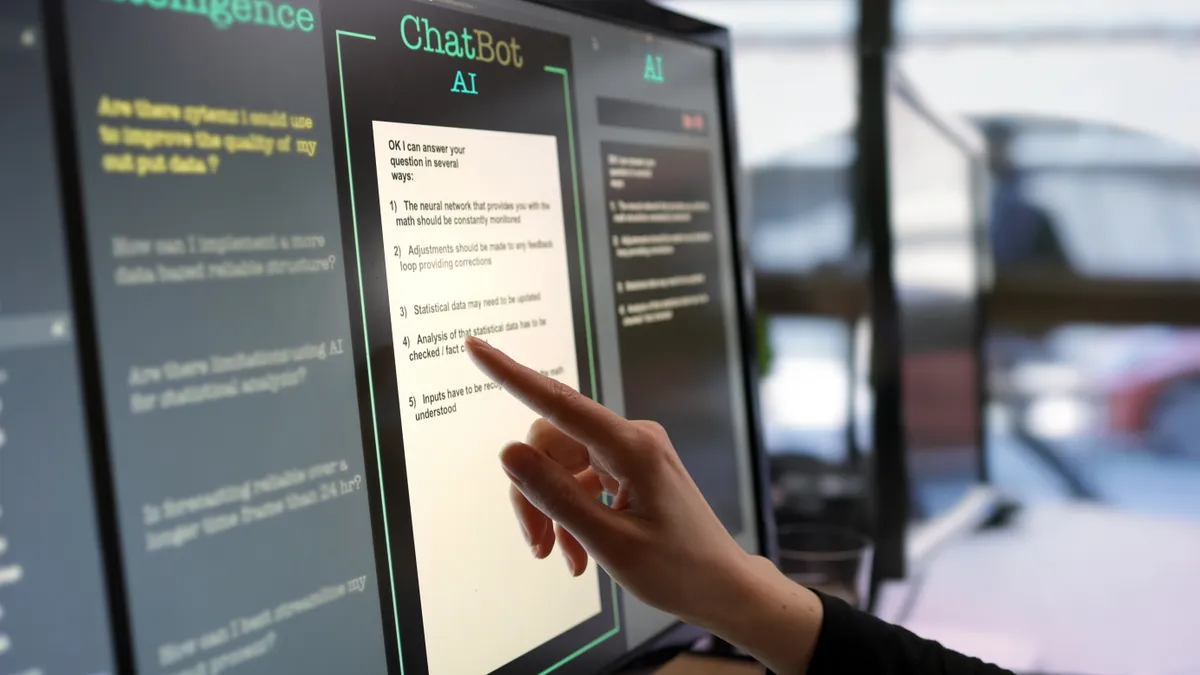This feature is part of a series focused on education technology. To view other posts in the series, check out the spotlight page.
Calvin Baker, the superintendent of Arizona's Vail School District, was running with a colleague from a neighboring district one day and sharing how his staff had taken binders full of curriculum calendars and instructional strategies and put them into a digital format. This was so the district’s 19 schools — spread over 425 square miles — could have easier access to the materials.
As they were running, the other superintendent, from the Benson School District, asked if his teachers could also have access to that bank of resources. After all, Vail was the top-rated district in the state at the time, so they had to be doing something right.
So the Benson district piloted what has now become Beyond Textbooks, a network of over 300 schools representing every county in Arizona, as well as districts in five other states. The districts not only have access to Vail’s grade-by-grade curriculum resources, but outstanding teachers in other districts can contribute lesson plans to the collection.
Teachers and parents in small rural districts sometimes wonder, “Are my kids learning like kids in a suburban district? Are we going fast enough?” Baker says. “Because they get paced with us, they can keep their kids clicking along with the same level of rigor.”
Beyond Textbooks demonstrates that being geographically isolated doesn’t have to be a barrier to high academic achievement, and innovative strategies to improve learning — often born out of necessity — are flourishing outside of big city districts as well. In fact, after Benson, a rural, five-school district southeast of Tucson, began using the materials, they knocked Vail out of the top spot in the state’s ranking.
‘Strengths of the local area’
In other parts of the country, rural schools and districts are viewing their location as an asset — not an obstacle — to providing students with a highly engaging education that prepares them for college and a career.
“We’re really capitalizing on the strengths of the local area,” says Nate McClennen, the vice president of education and innovation for Teton Science Schools, a nonprofit organization based in Jackson, WY. “We try to imagine a curriculum that emerges from the place.”
In addition to operating an independent school, Teton Science Schools hosts workshops and provides training to roughly 500 teachers a year on how to turn their community into a classroom. McClennen says. Recently, a middle school math teacher in Driggs, ID, involved her students in proposing designs for a new aquatic center being built in the area. The students surveyed community members, used geometry to design models and interacted with the city planner to present their designs to a planning committee.
In addition to its Teacher Learning Center, the organization is also creating a network of teachers in Idaho, called Place Schools, to allow for more sharing among educators. A network, McClennen says, can also address an area in which rural districts often struggle — having teachers qualified to teach higher-level classes. He envisions a cohort of educators with expertise, in math or science for example, who can support teachers in a rural school through curriculum design and student assessment.
Understanding gaps
A primary difference between rural schools and those in larger, urban areas is that rural schools tend to use the same instructional approach or curriculum for all students, notes Jon Habben, the executive director of the Nebraska Rural Community Schools Association. This characteristic means it can be more difficult in rural districts to determine what educators did to narrow the gap.
“In rural, we don’t have a dozen different programs,” Habben says. “We don’t have enough kids for that kind of thing.”
In addition, rural districts often don’t have enough students to make up the same subgroups that exist in larger districts, explains Shelley Billig, the vice president of RMC Research Corporation, based in Denver. RMC’s study of rural districts showed, for example, that while rural districts in Colorado had enough English language learners to be a “subgroup of interest,” few rural districts in Nebraska had significant numbers of English language learners. That’s why it’s more meaningful in that state to examine gaps between higher- and lower-income students.
In the 13,700-student Albemarle County Public Schools in Virginia, which is bordered by the Appalachian Trail to the west, the James River to the south and stretches over 726 square miles, leaders also work to close the gap between the isolated and the less-isolated, explains Ira Socol, the director of learning technologies and innovation. Broadband is not available across 75% of the county, and the cellular carriers have even turned down invitations to build towers in school parking lots, Socol says.
So the district has been building its own 4G LTE network and cell towers — not only so it can provide service to schools, which have a 1-to-1 laptop program, but so it can also “blast” internet service into trailer parks and other communities so students can have the same access at home. In this mountainous region with limited WiFi, even police officers park their cruisers in school parking lots so they can get a signal, Socol says.
The district’s determination to remove the “opportunity gap,” Socol says, extends to classrooms, where multi-age classrooms at the elementary level — with a kitchen as a focal point — are providing students with choice and flexibility. And at the high school level, budding entrepreneurs are constructing tiny houses as part of a math project or tending 40,000 bees in a yard behind their school. Over the past decade, the district has seen its dropout rate decline from 10% to less than 2%, Socol says.
While a “robust-enough technology plan” can help to eliminate some of the isolation by bringing the world into the classroom, Albemarle schools also focus on giving students opportunities outside of school. “We have kids who would never get to Charlottesville if we didn’t take them on field trips,” Socol says.
As with Beyond Textbooks and Place Schools, rural districts find that they can be more successful when they band together. The Ohio Appalachian Collaborative, for example, is a partnership of 27 southeast Ohio districts serving 48,000 students, with over half of them living in poverty. With a Straight A Fund grant from the Ohio Department of Education, which is designed to support creative ideas for improving academic achievement, the collaborative is expanding opportunities for students by providing dual enrollment courses provided by 13 higher education institutions. The courses are linked to career pathways, such as health and human services and business and entrepreneurship, and students are earning college credit — and sometimes even an industry certificate — before they graduate high school.
While the quality of online courses can vary considerably, the state grant is also supporting teachers in earning graduate degrees in multiple content areas so they can serve as adjunct instructors in those dual credit courses.
Also in the Appalachian region, schools working with the Partners for Education division at Berea College in Kentucky have been able to focus on the needs of almost-proficient students through an innovative academic case management program. The academic specialist uses multiple sources of data to determine which students to serve and works with them in the classroom, as well as individually.
“It is those students that generally do well and that are near proficiency level that tend to get overlooked,” says Barbara Masters, the dean of students at Sand Gap Elementary School, southeast of Lexington. “These ‘middle’ students who are near proficiency are not typically a focus group due to time restraints and lack of people to work directly with them.”
Building a culture
Partnerships with businesses, higher education institutions and philanthropists are also providing real-world learning opportunities for students in the 2,350-student Elizabeth Forward School District, south of Pittsburgh — one of the first rural districts to become part of the League of Innovative Schools.
“Out of adversity sometimes comes creativity,” says Superintendent Bart Rocco, who was looking for ways to keep students from dropping out or switching to online charter schools.
The district became part of Remake Learning, a network in the Pittsburgh region focused on digital learning, maker spaces and even entrepreneurship. Now, with the support of Carnegie Mellon University and the University of Pittsburgh, Elizabeth Forward High School has a gaming academy in which students learn the history of games, design them, write the stories, program the games and take part in internships with gaming companies. Students, even as young as 3rd graders, are also running their own businesses — producing, advertising and selling products ranging from t-shirts to bath bombs.
In one of the states seeing slower progress in raising high school graduation rates, Rocco says discipline and attendance is improving. And now fewer students are withdrawing to attend online charter schools.
“It takes years to build a culture,” he says, “but I think we’ve changed the culture here.”


















